“We quite like the CR-78 hats, but you can use anything else that adopts a similar lightness of touch”: How to create a low-key ambient techno beat in your DAW
Creating an ambient techno groove can be far from a chilled affair, so we take you through the basics of generating a low-key pattern.
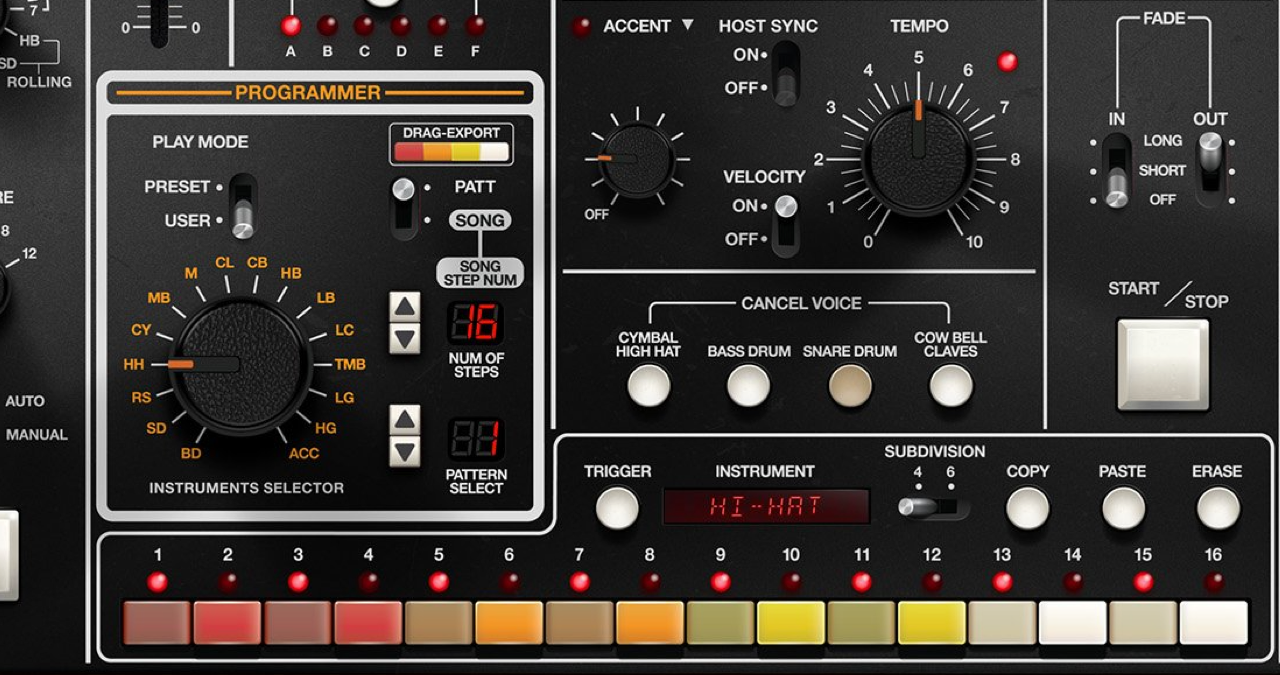
The whole concept behind the beat-side of the ambient techno genre, is in providing a relatively forthright and driving groove while utilising sounds which are slightly calmer than the heavier drum sounds you might find in other forms of EDM.
Drawing influence from the techno genre, there can be plenty of repetition in a drum track, relying upon the introduction of layers to generate builds.
We are going to keep things simple and use some basic samples from within Logic, but the principle remains the same for all commercially available DAWs, which will almost certainly have a similar selection of samples.
If things don't quite match, there's nothing to stop you creating your own sound set, while endorsing a similar ethos to our rationale here.
So grab your DAW, load your samples, and set your track to 120BPM.
(To make images larger, right click and select Open Images in New Tab)
How to create a low-key ambient techno beat in your DAW
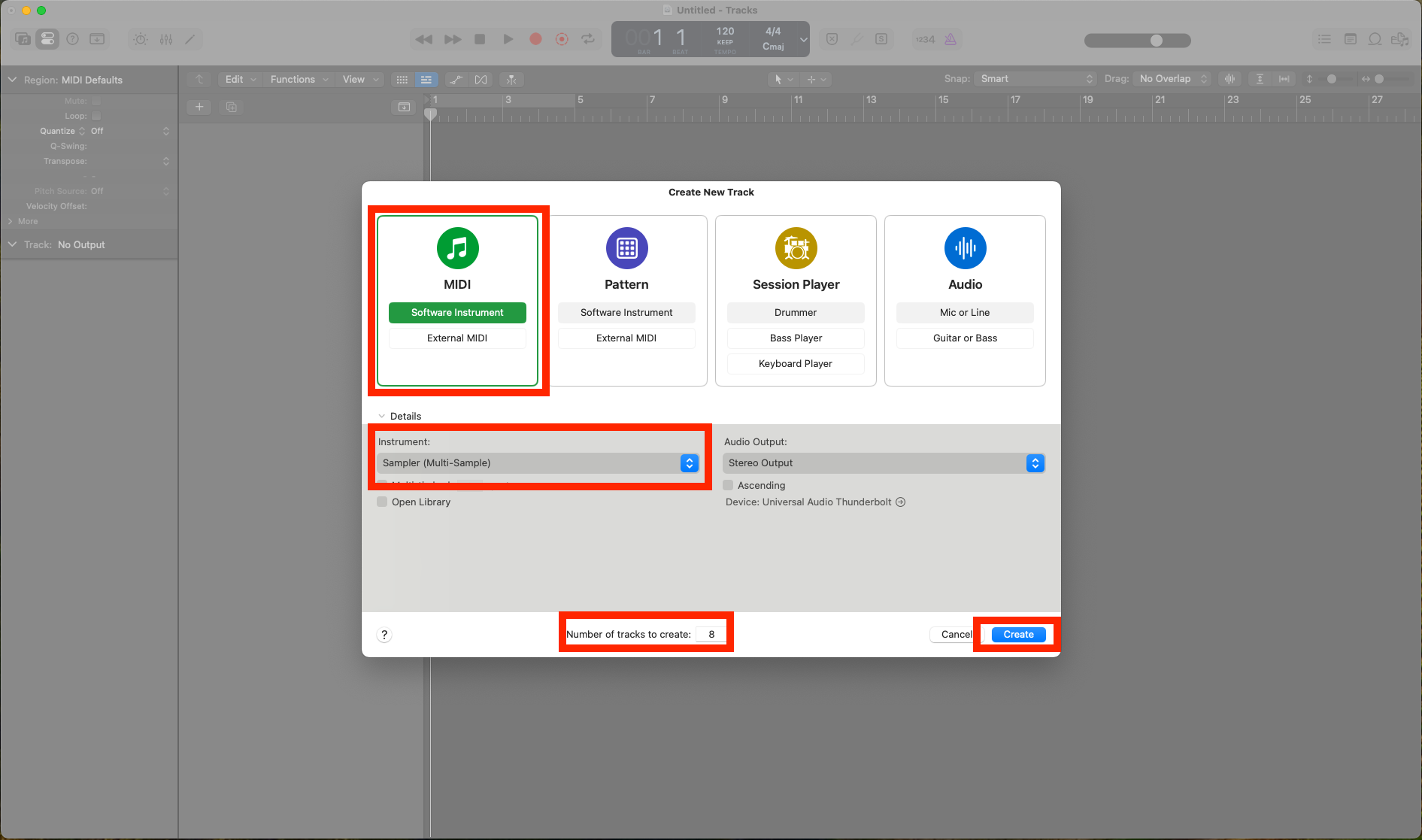
1. Load up your DAW; set yourself up with about eight tracks, each with an appropriate drum-capable instrumental plugin. In our case, we are using Logic with the on-board Sampler, utilising the default sample library. The names might differ, but all commercially available DAWs will provide something appropriate. You can even use sample playback plugins, such as Kontakt if that is your preference.
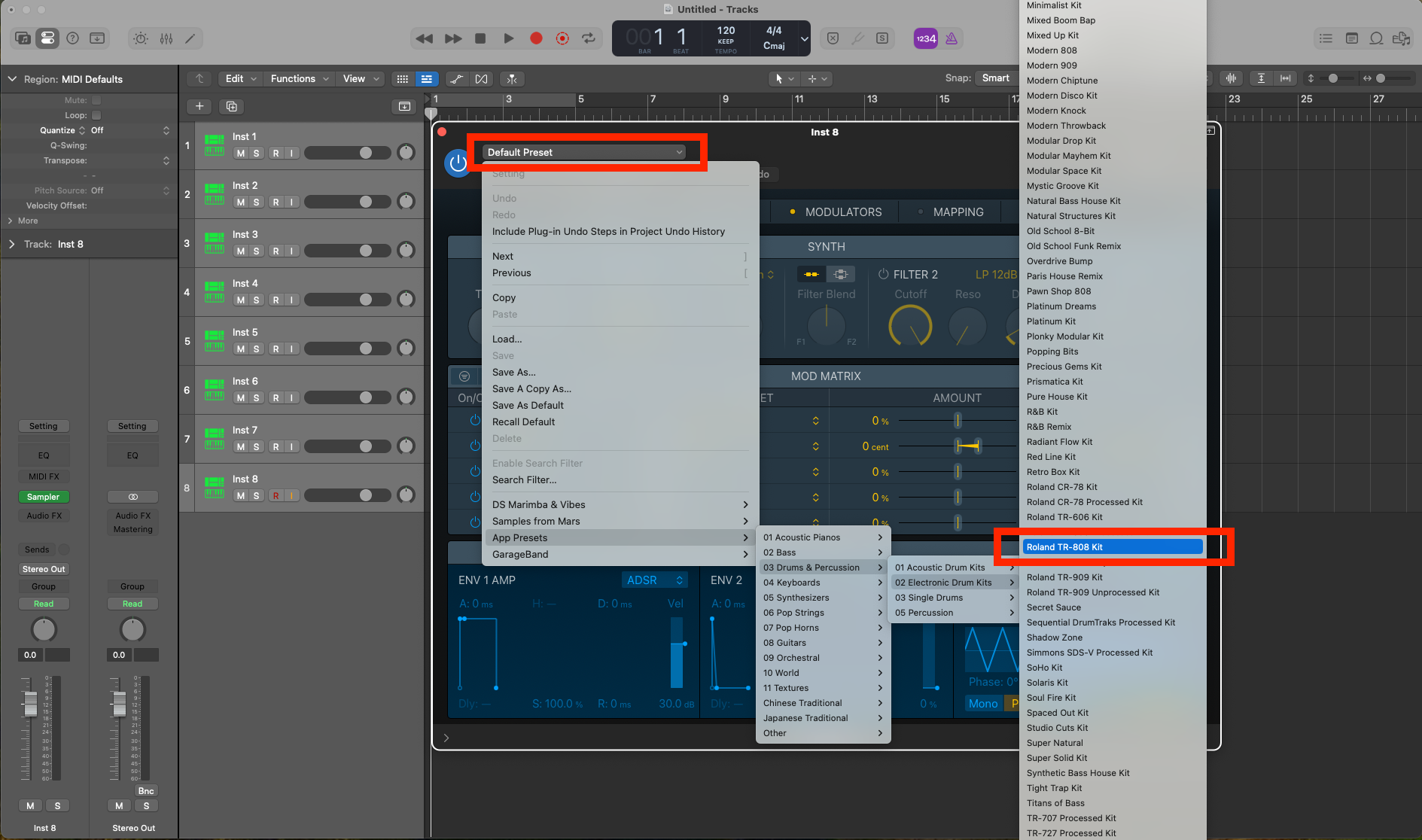
2. For the purposes of our track, we are going to use quite a few samples drawn from the Roland TR-808. Look for something similar within your own sample library, alternatively you can use other plugin drum instruments such as the TR-808, which is available as part of the Roland Cloud.
Get the MusicRadar Newsletter
Want all the hottest music and gear news, reviews, deals, features and more, direct to your inbox? Sign up here.
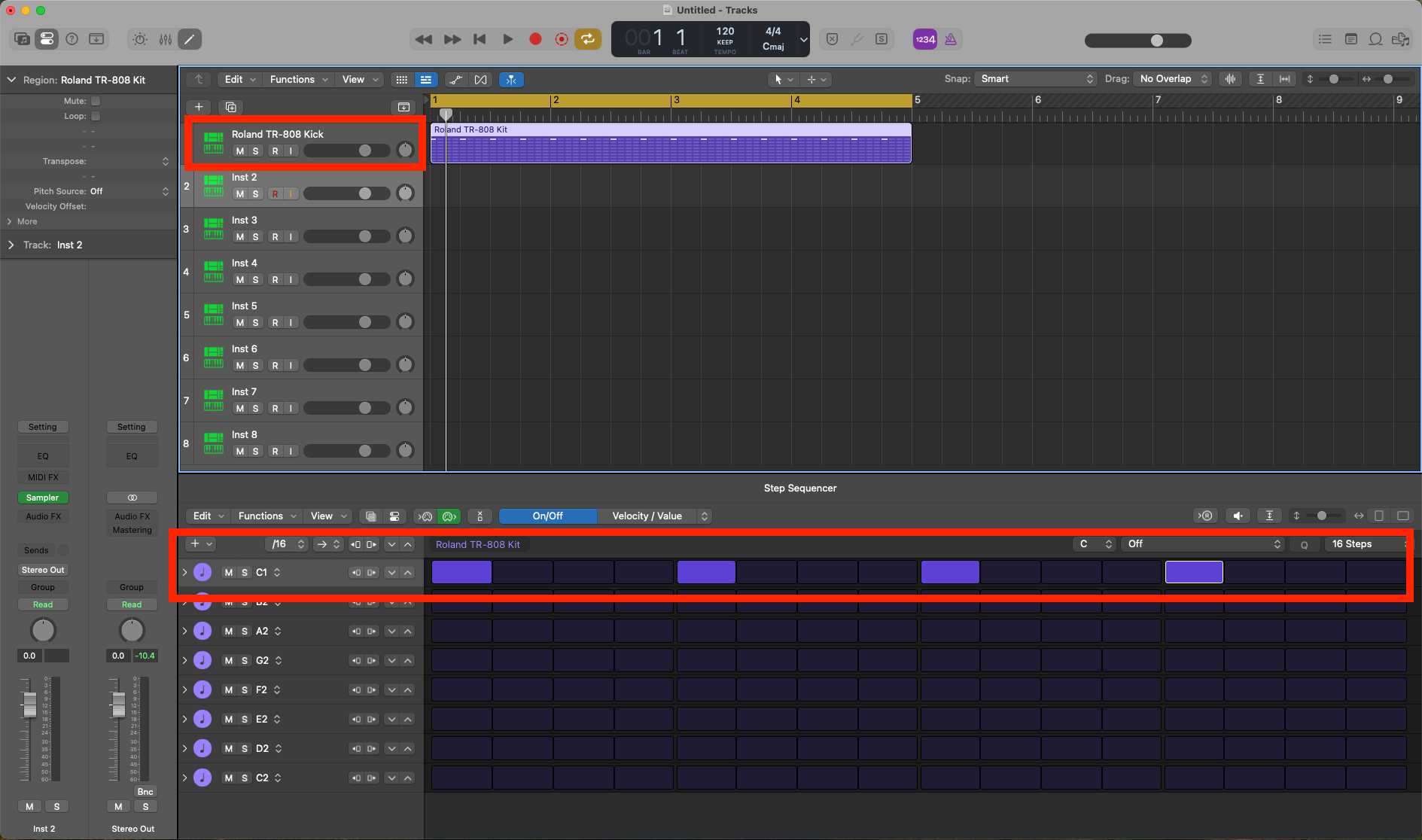
3. As we are aiming to create something nice and simple, we will begin by programming an 808 bass drum (kick), playing on every quarter note of a bar in a loop. In our example, the bass drum is triggering from the MIDI note C1. You can play this manually, or enter the note values using some form of sequencer which should be available within your DAW. If you do play the notes via a keyboard, keep the velocity values the same throughout.
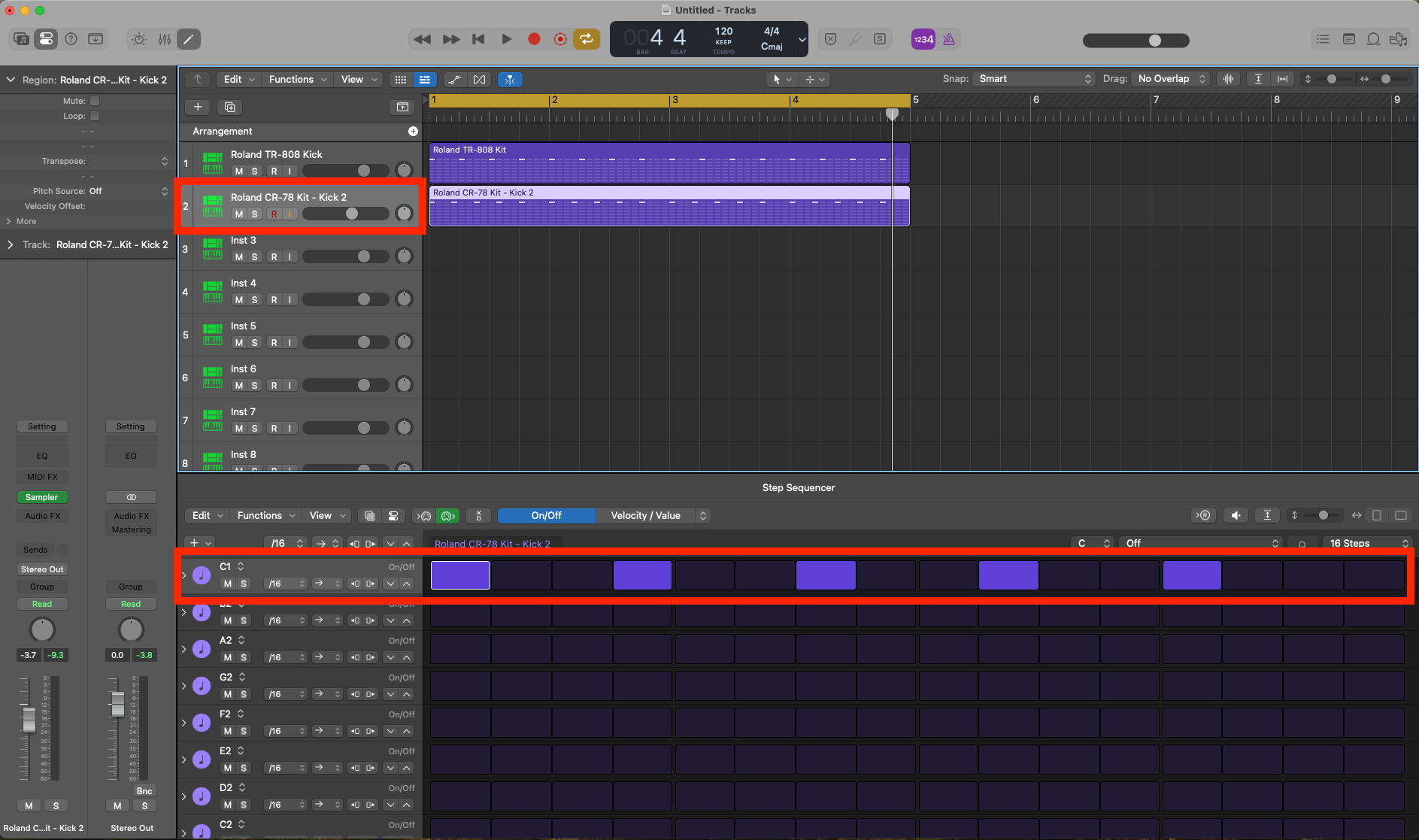
4. Now we are going to load a different set of samples; our plan here is to locate a slightly different bass drum sound, which will play at a slightly different pitch, preferably a shade lower. We quite like the idea of the CR-78 kick, but you could just use another instance of 808 kick, and use the tuning function on your sampler to drop the pitch slightly. Once you have your sound, we are going to play a slightly different pattern as indicated in our sequence. This rhythm cuts across the straight four-to-the floor-pattern of the previous 808 kick.
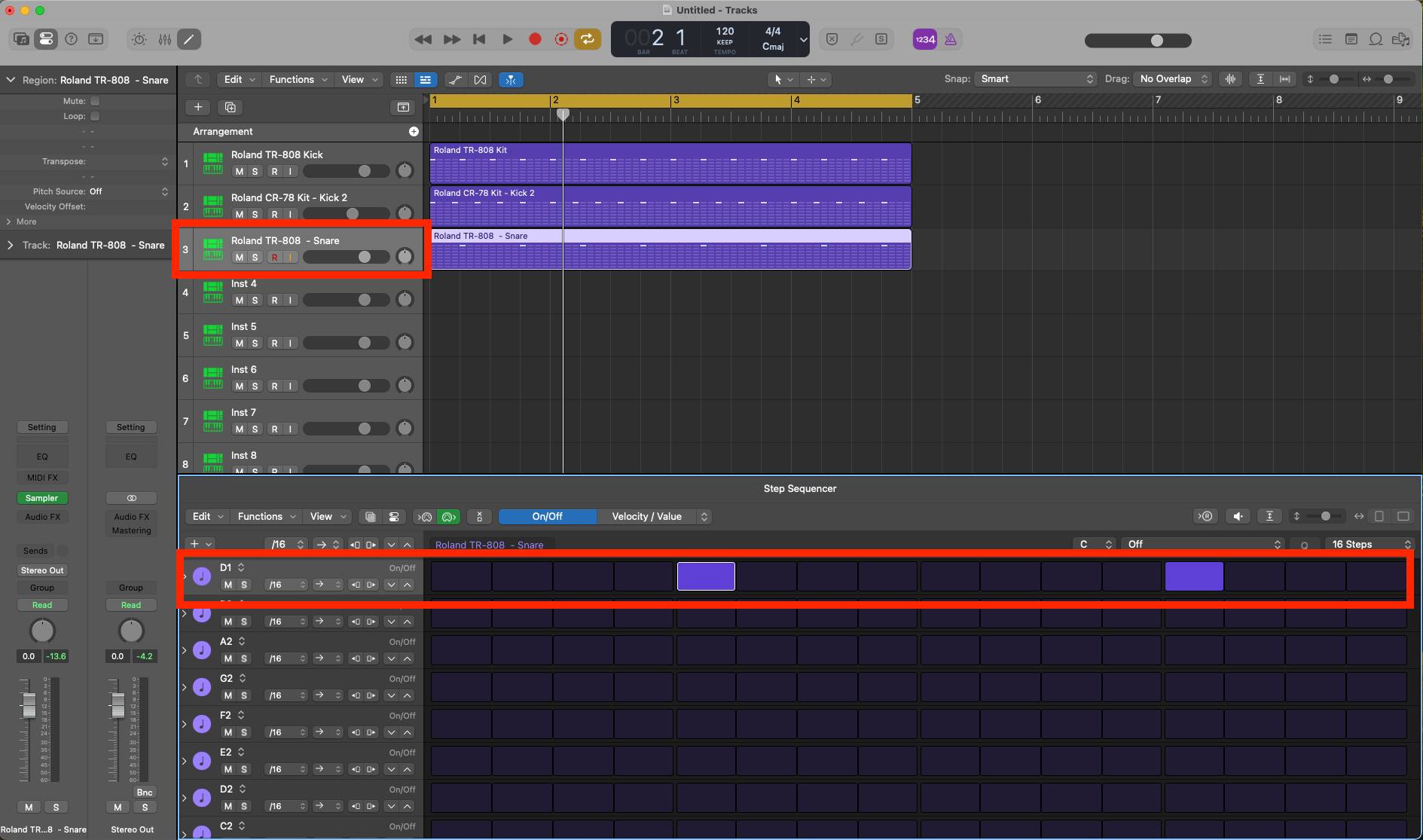
5. Next we're going to place a simple snare track alongside our two kick tracks, using the classic 808 snare. Load up another track with a set of 808 samples, and trigger the snare (which will likely appear on MIDI note D1) on beats 2 and 4. It's slightly predictable, but it's very much the ideal for this form of music.
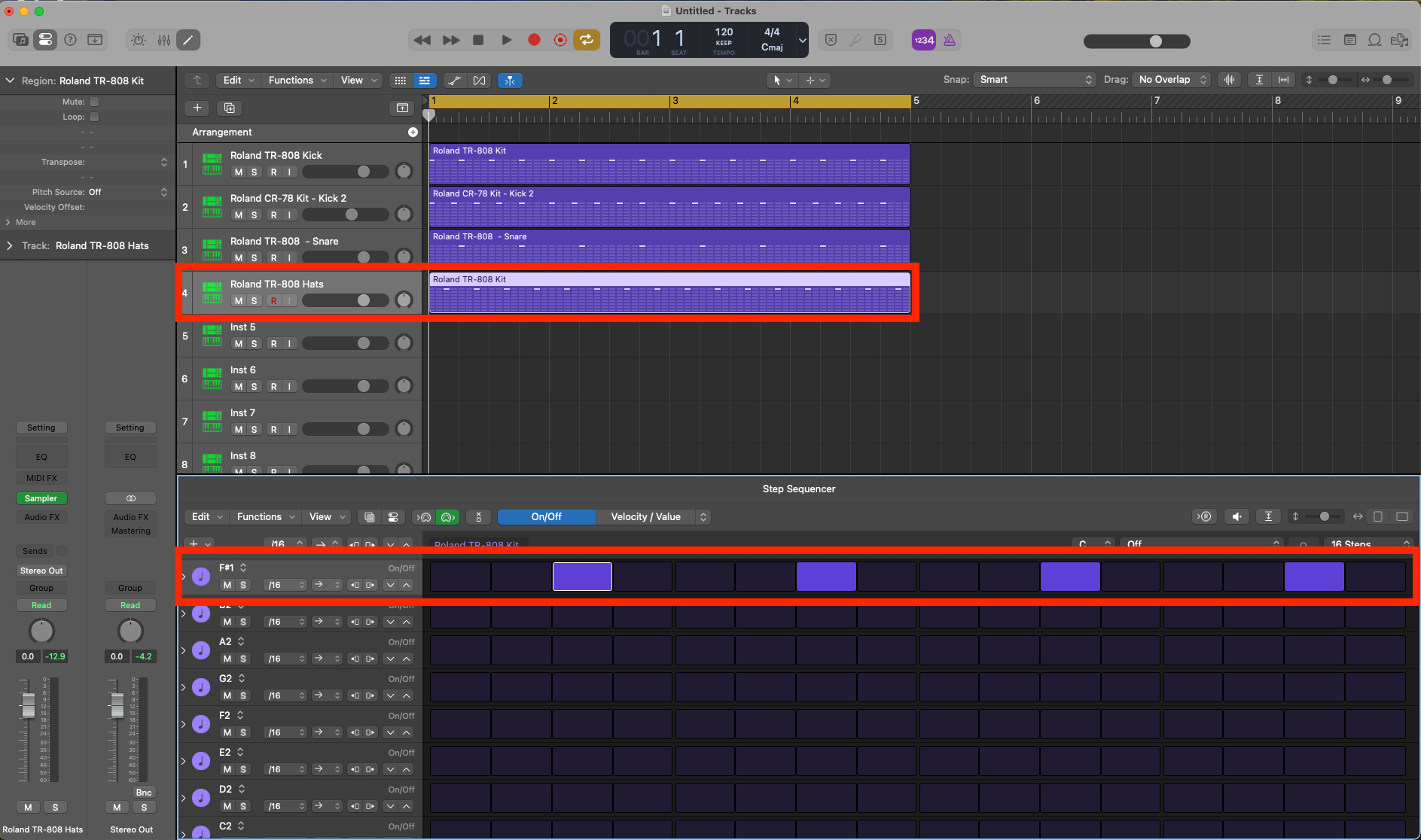
6. Now we can turn our attention to the hi-hat, and the 808 hats are a perfect choice - yet again! Select your 808 samples, and place a closed hi-hat (which will likely be on MIDI note F#1) on the third 16th note of each beat. This will create an offbeat pattern, against the on-beat pattern, heard in the rest of the drums.
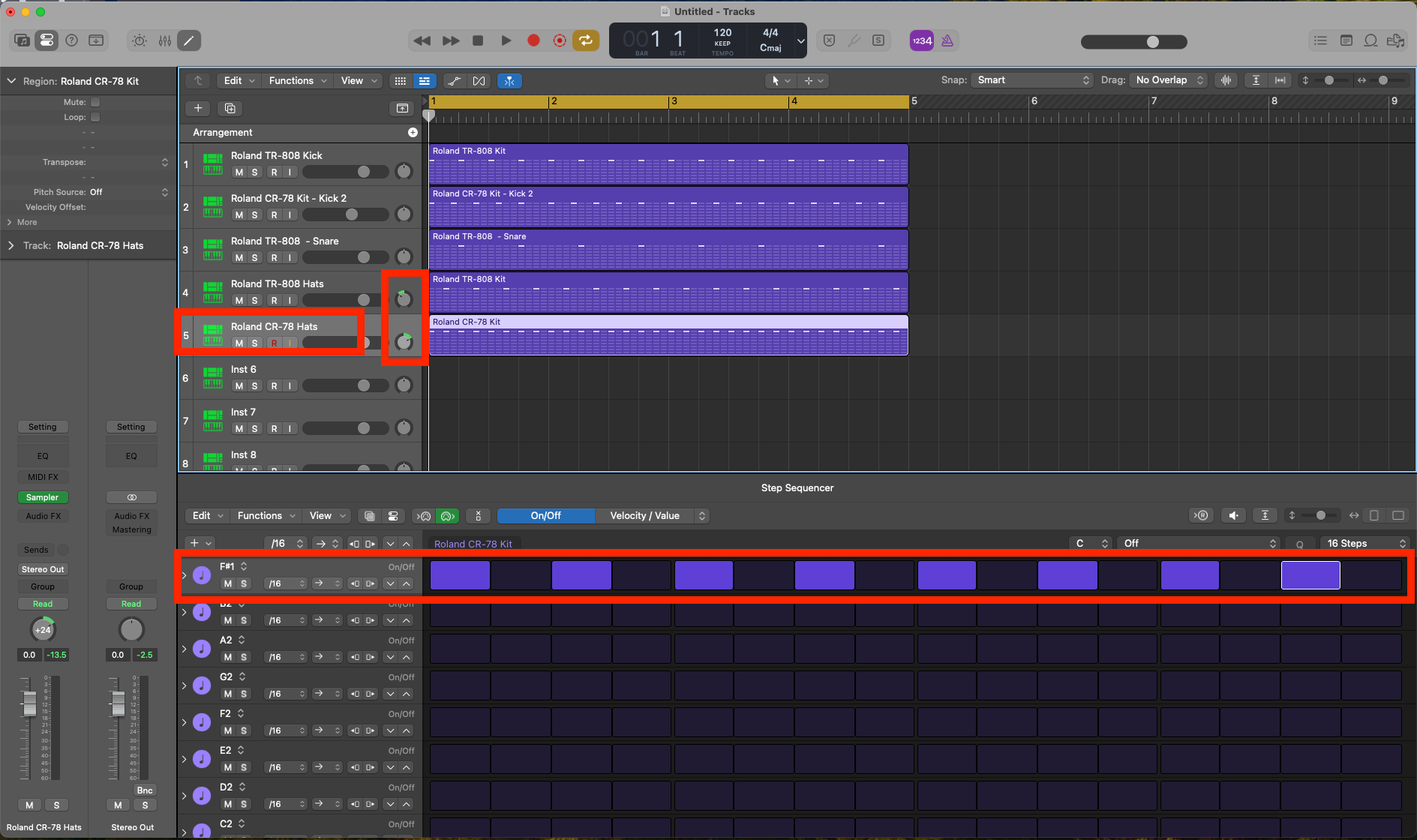
7. A little like our 2nd kick drum, we are going to add a 2nd hi-hat. We want this to be a slightly different colour to our existing 808 hi-hat. We quite like the CR-78 hats, but you can use anything else that adopts a similar lightness of touch. To counteract the offbeat of the first hi-hat pattern, we are going to place our second hi-hat on every 1/8th note beat. As an additional production detail, pan the two hi-hat parts, on opposite sides of the centre.
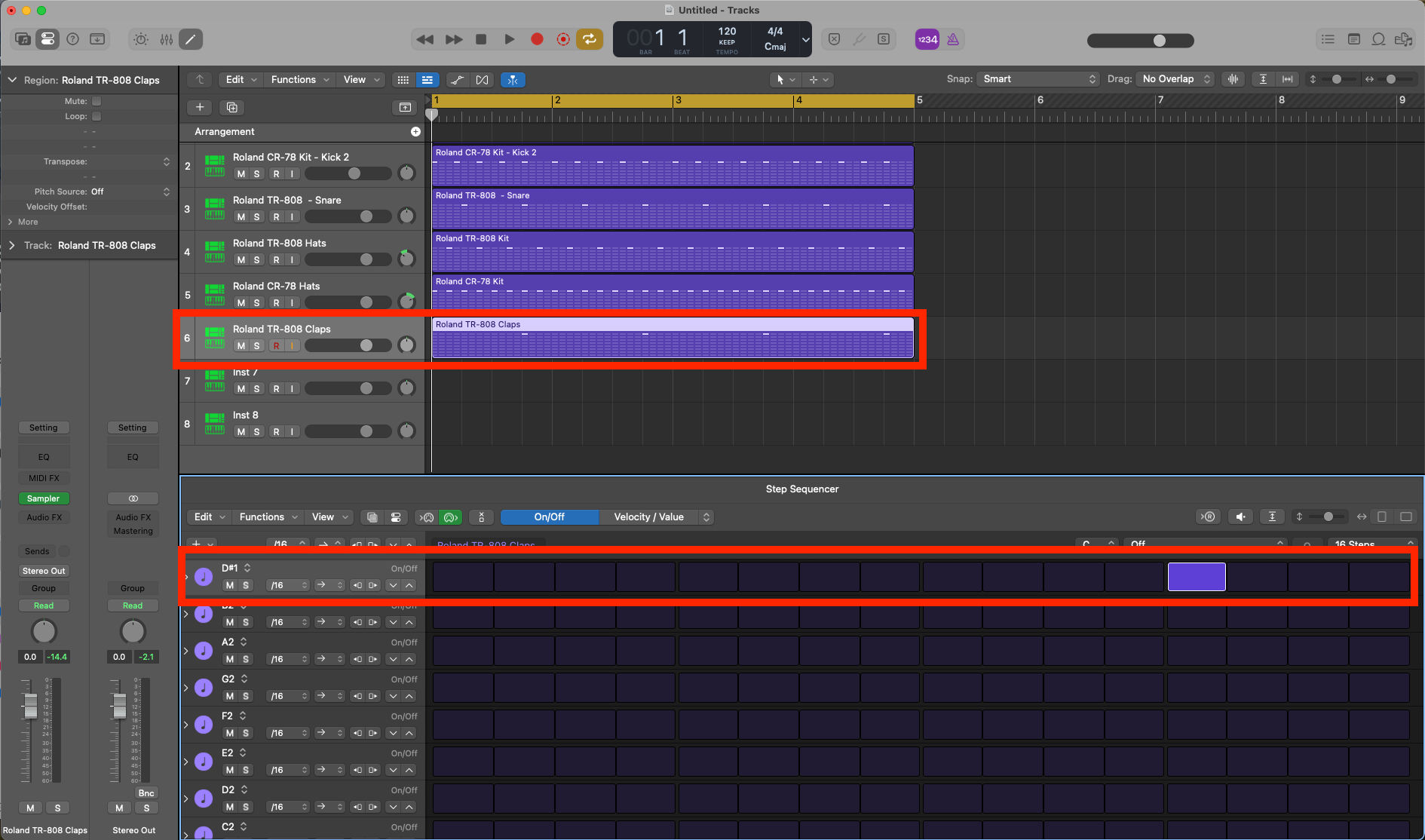
8. To accentuate the very last snare in the pattern, we are going to also place some claps on top. The 808 claps are ideal for this purpose, although there are many other claps that could do a similarly effective job. We also quite like the Linn or the TR-707 claps, but feel free to use anything which feels appropriate. Once you've loaded your sound, simply apply a clap trigger on the 4th beat of the bar.
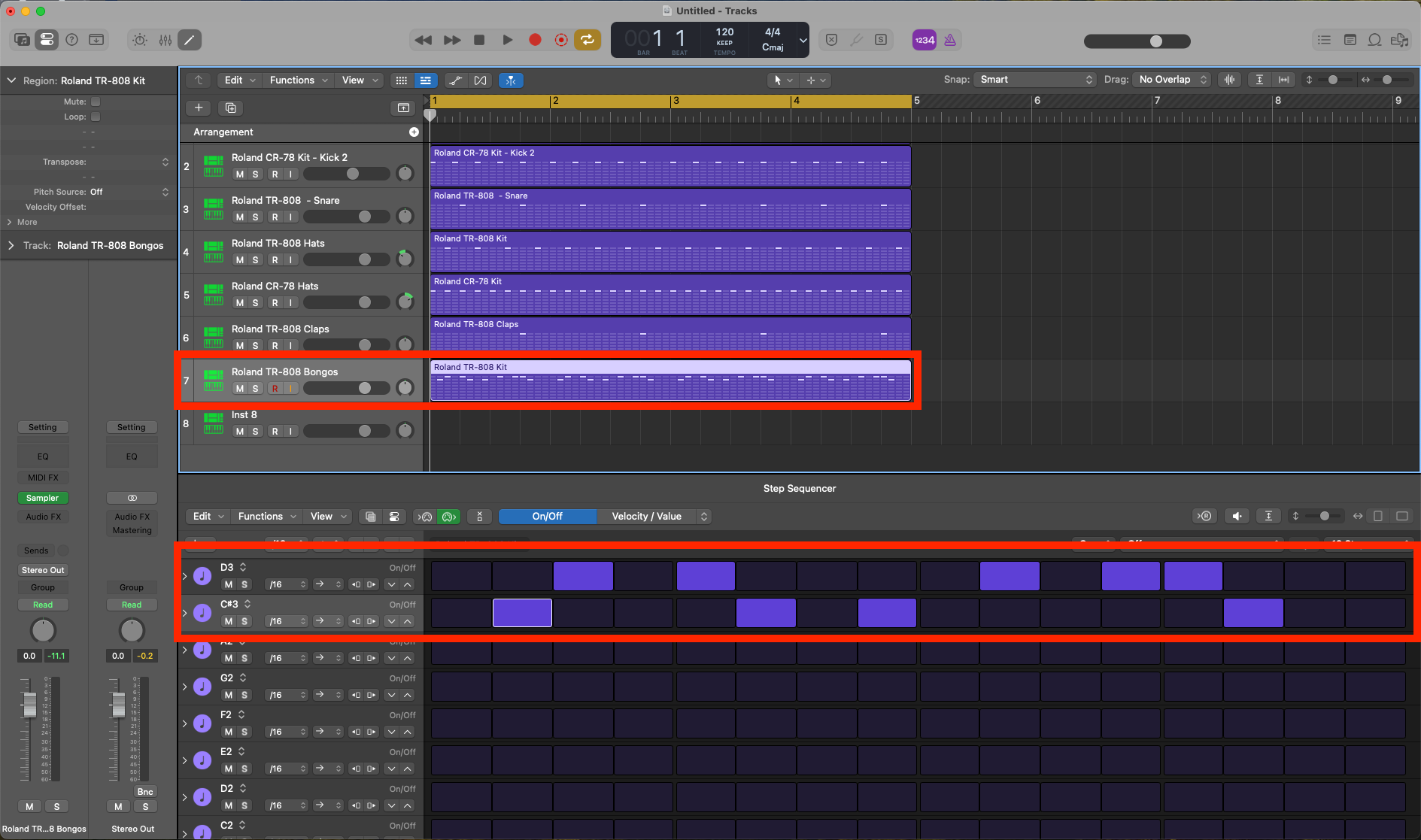
9. From here on, you have a basic pattern which will serve as a perfect starting point. You can mute or add further instruments from here, but it is also worth experimenting. One favourite also stems from the TR-808, and the use of the bongos. Try putting together a pattern of high and low bongos, along the lines of our example.
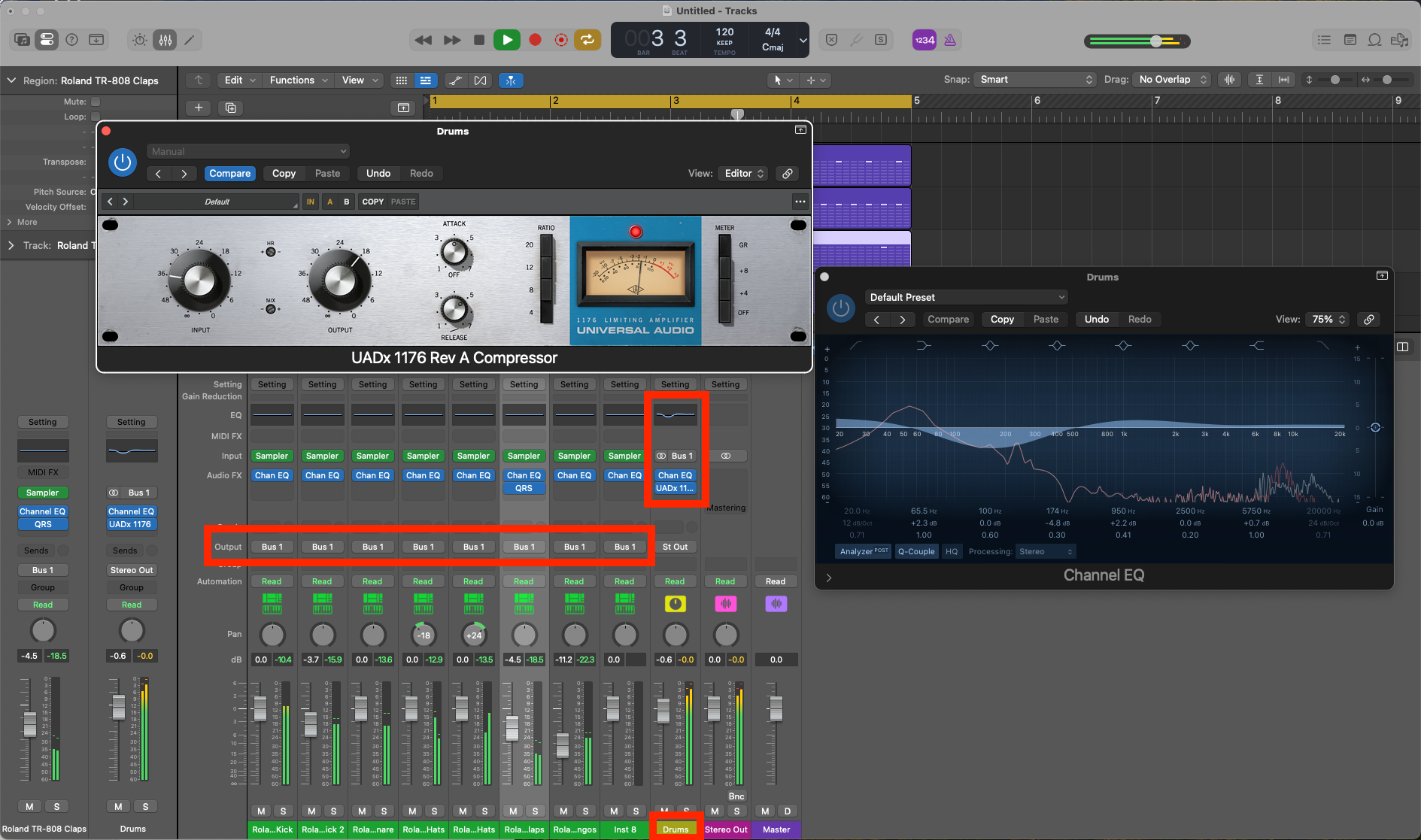
10. Finally, we are going to send all of our drum tracks to a bus, so that we can easily control the overall volume and also add effects. It is worth thinking about EQ at this stage as well. Applying some fast and warm compression to the bus channel would be ideal.
Our example, contained within this tutorial, is very much designed to be a starting point for your journey into ambient techno. The driving nature of the pattern, is nicely balanced by the lightness of the sounds that we have used. Be sure to check out our additional ambient techno tutorial, exploring some of the core sonic elements typically deployed, as well as our longer deep-dive on the genre, here.
You could be forgiven for thinking that this tutorial is simply an advert for the early Roland drum machines, but these are the machines that have captured the heart of this style of production. Even 40 years later, they still sound mightily impressive.
Roland Schmidt is a professional programmer, sound designer and producer, who has worked in collaboration with a number of successful production teams over the last 25 years. He can also be found delivering regular and key-note lectures on the use of hardware/software synthesisers and production, at various higher educational institutions throughout the UK










